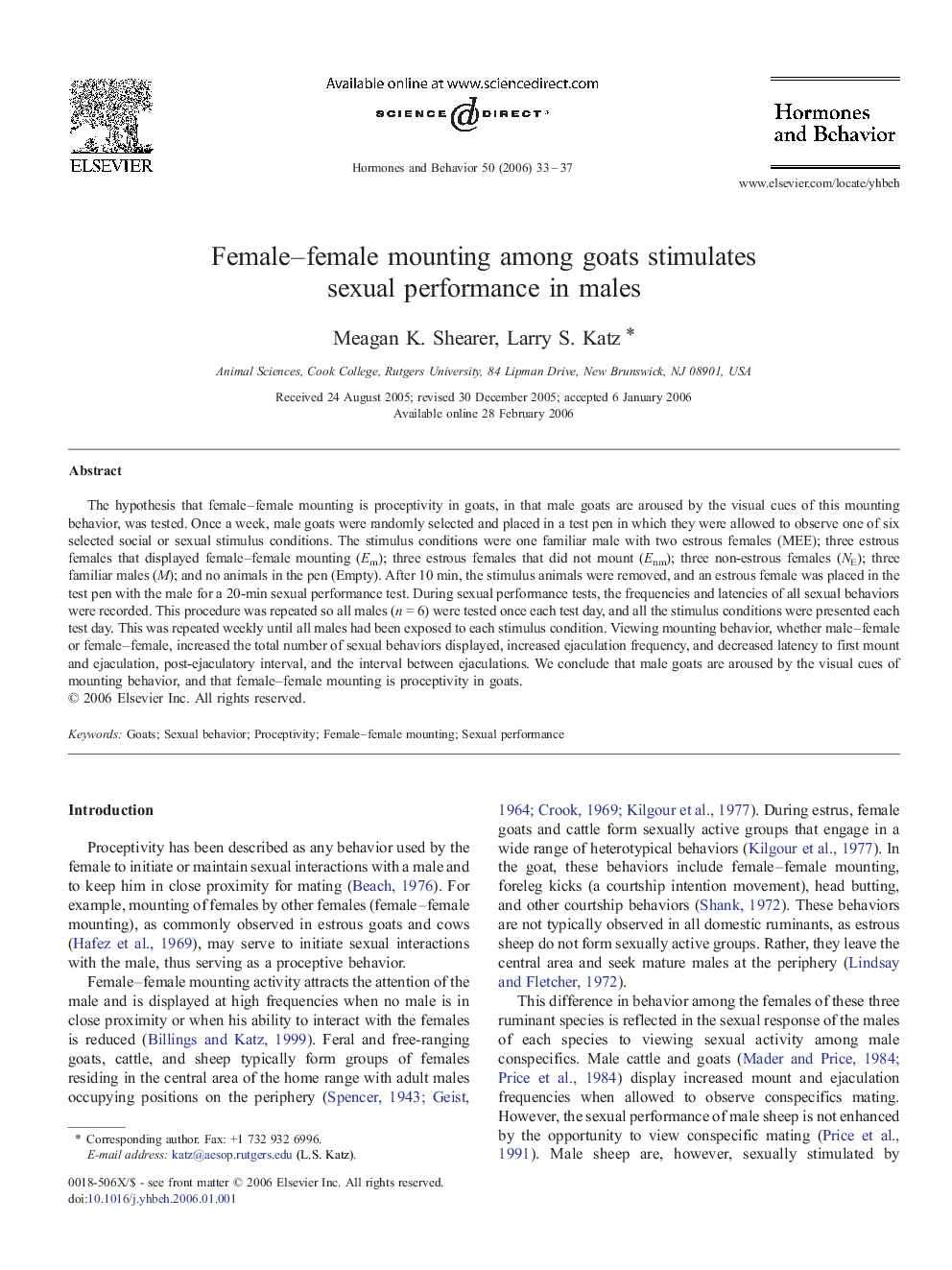| Article ID | Journal | Published Year | Pages | File Type |
|---|---|---|---|---|
| 323574 | Hormones and Behavior | 2006 | 5 Pages |
The hypothesis that female–female mounting is proceptivity in goats, in that male goats are aroused by the visual cues of this mounting behavior, was tested. Once a week, male goats were randomly selected and placed in a test pen in which they were allowed to observe one of six selected social or sexual stimulus conditions. The stimulus conditions were one familiar male with two estrous females (MEE); three estrous females that displayed female–female mounting (Em); three estrous females that did not mount (Enm); three non-estrous females (NE); three familiar males (M); and no animals in the pen (Empty). After 10 min, the stimulus animals were removed, and an estrous female was placed in the test pen with the male for a 20-min sexual performance test. During sexual performance tests, the frequencies and latencies of all sexual behaviors were recorded. This procedure was repeated so all males (n = 6) were tested once each test day, and all the stimulus conditions were presented each test day. This was repeated weekly until all males had been exposed to each stimulus condition. Viewing mounting behavior, whether male–female or female–female, increased the total number of sexual behaviors displayed, increased ejaculation frequency, and decreased latency to first mount and ejaculation, post-ejaculatory interval, and the interval between ejaculations. We conclude that male goats are aroused by the visual cues of mounting behavior, and that female–female mounting is proceptivity in goats.
